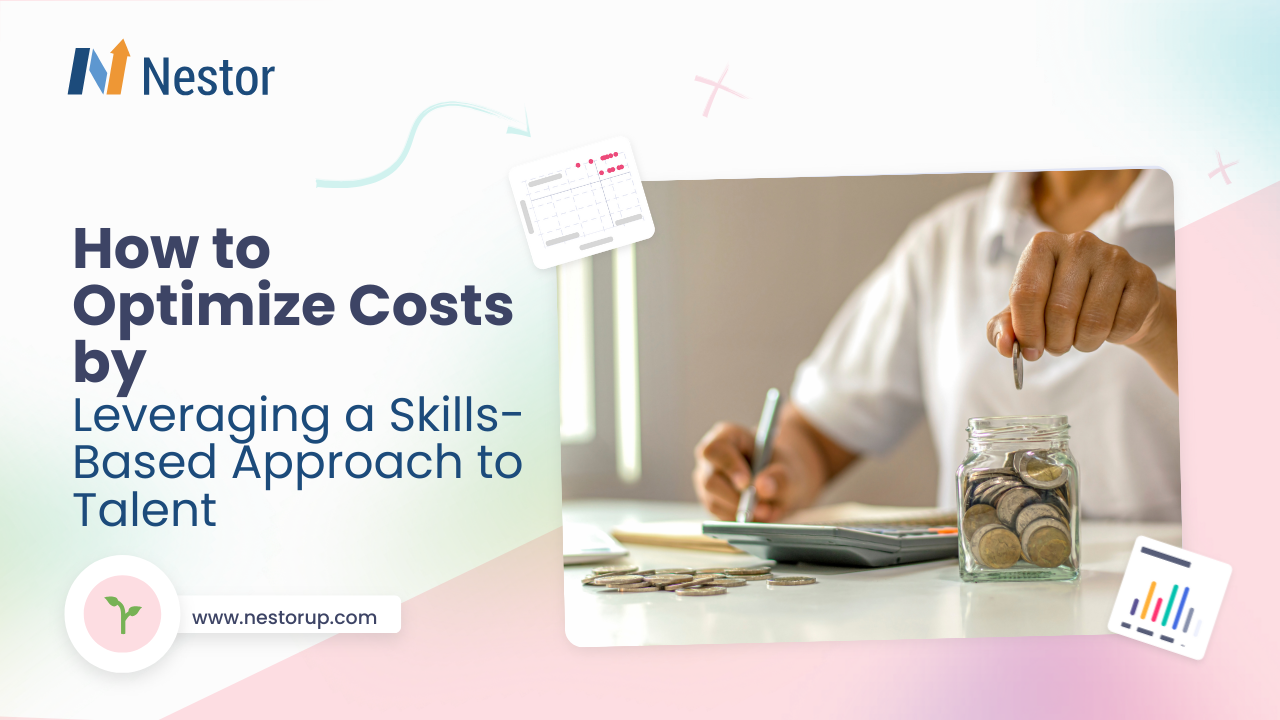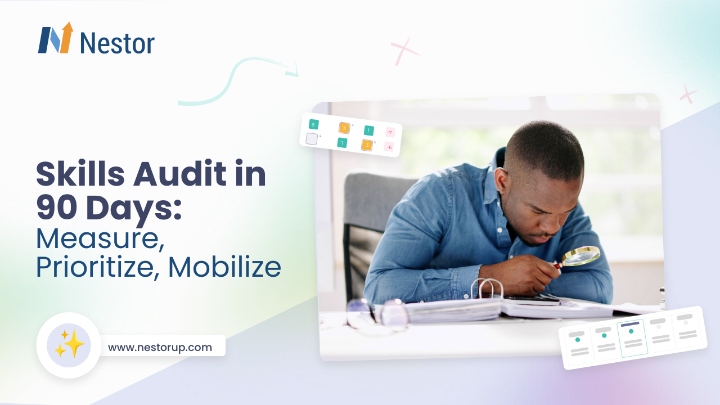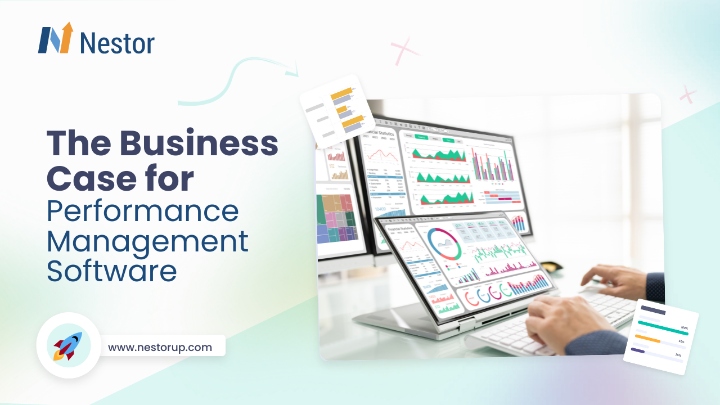How to Optimize Costs by Leveraging a Skills-Based Approach to Talent
7 min read

How to optimize costs? or How to make the most out of our resources? are some of the questions faced by business leaders and HR strategists. Talent is a key response here, because talent directly impacts your business and therefore expenses.
Whenever an employee decides to leave, takes on a new job opportunity, or enrolls in a development program, they generate costs for the organization. For example, some studies show that every time a business replaces an employee, it costs 6 to 9 months’ salary, on average.
Talent is no longer just an HR topic, it’s a critical business issue – and top of mind for CEOs and CFOs alike.
— Mercer
In light of the worsening economic conditions, CEOs face tough decisions and strive to balance short-term risks with long-term growth objectives. CEOs globally are consequently re-evaluating their operating models and considering cutting costs measures. In fact, according to a recent Mercer report, 56% of companies surveyed are focusing on increasing cost controls as a measure to protect themselves in the prospect of a recession.
But while cost optimizations are a priority for most C-level executives, this unfolding economic downturn is different from other crises seen in the past. The recent experience with big employee attrition rates and the global skills shortages makes decisions even more difficult. When it comes to talent, we strongly believe that a skills-based approach can shed light and pinpoint strategic decisions about people that can translate into cost optimizations.
Make smart decisions about internal development versus external hiring
Sometimes the best person to fill out a vacant position is someone already working inside your organization. Given the fact that most employees want growth opportunities inside their company, hiring internally would be the best solution at first sight.
Skills assessments and clear career paths will help us understand the level of skills an employee has and what steps need to take to be prepared for the next role. Depending on the conclusions, there will be times when upskilling an internal candidate will make more sense than bringing in someone new.
“Decouple skills from jobs” to make sure unique talent is retained
In periods of economic headwinds, companies will start to look more carefully at productivity, headcount, and also at some job roles that might be not necessary anymore. One useful piece of advice to consider if you go through a similar process comes from Mark Elliott, CFO at Mercer.
He believes that any company reducing headcount during this period should “decouple skills from jobs” to make sure that even as unneeded roles are eliminated, employees with critical skills are retained and redeployed to different areas.
This a measure that plays in the long run by avoiding situations when the lack of some skills might turn critical and force your organization to overpay for acquiring them.
Redeploy your workforce in those areas where your business needs it the most
Although intended to optimize costs by reducing headcount, the tech layoffs seen lately are also generating costs, at least in the short term. Google is just one of the examples announcing layoffs recently.
As Google and Alphabet CEO Sundar Pichai announced, all U.S. employees will be entitled to separation benefits, including payment for a certain period, a severance package, bonuses, remaining vacation time; healthcare and job placement, and immigration assistance. Although avoiding long-term payments with the salaries, these are all costs in the short-term.
There are cases when organizations can avoid layoffs by redirecting talent and capital toward the highest priorities. This migration of workforce inside the company has also been referred to lately as “quiet hiring“. This practice essentially means that current employees might take on different assignments or join different projects or roles within the organization; roles or tasks that are in high demand, following new business priorities.
A skills-based approach is a perfect solution in this case, as it matches people’s unique talent to the type of work in which their skills will be applied best. With the help of internal talent marketplaces, leaders can match candidates that are a close fit in terms of skills with the open positions and establish necessary pathways for learning and development to prepare them for the new role.
As a result, these organizations can close skill gaps, and fill the new trending positions while skipping the price tag that normally comes with layoffs and later with new hires.
Use experiential and skills-based learning to develop your people and optimize budgets
More and more companies are transforming their learning and development plans to be more skills-based, and less dependent on suggesting learning and development opportunities based on people’s jobs. The advantages of this approach are clear and reinforced by research data from McKinsey & Company.
Organizations that realign HR processes to match skill needs can boost employee engagement by 50 percent, lower training and development program costs by 50 percent, and raise productivity by 40 percent.
— McKinsey & Company
In the Nestor platform, for example, each employee has a unified skills-based profile that evolves and encompasses interactions in the workplace, performance, engagement, employees’ expectations, and specific behaviors and skills assessments.
Based on these profiles, each employee receives tailored nudges with best-fit development opportunities to forge new career paths or make lateral moves inside the organization according to their interests and business needs. Moreover, employees together with their managers can set clear development objectives and revise their progress during 1:1 meetings, feedback sessions, or performance reviews.
In our opinion, skill-based learning can also be rooted in the 70-20-10 method of learning.

According to statistics, most learning occurs beyond formal training programs. It is in fact a continuous learning process where people get to develop their skills through on-the-job experiences (70%), and exposure and interactions in the workplace facilitated by coaching sessions, mentoring, feedback, or collaboration (20%). Only 10% of the learning is a result of formal training, eLearning, or coursework.
As we already know, some companies may be reluctant to invest in learning and developing initiatives during an economic downturn due to cost pressures. We think it’s the right moment to switch the focus from the 10% type of learning method and prioritize the other 90%.
The 90% is the framework that empowers your employees to learn in an ongoing way through mentoring, coaching, feedback, participating in new projects or cross-functional teams, and as a result, learning new skills and broadening their knowledge.
Final Thoughts
Every time we speak about efficiency, productivity, or cost optimizations, we have to take into consideration that these factors are influenced by a broader context and a wage range of events happening inside and outside of the organization.
However, a skill-based approach can enforce a common touchpoint that can link all talent operations. Skills give your organization full visibility over your people’s capabilities and potential to move forward in their careers. Therefore, it’s a great point to consider when making strategic decisions about talent and the costs associated with talent.
Our People Intelligence Platform offers workforce visibility over employee skills and capabilities, engagement, performance, culture, and career mobility and is emerging as the new must-have in the new world of work. If you’re just getting started with skills, we’re always here to help.










